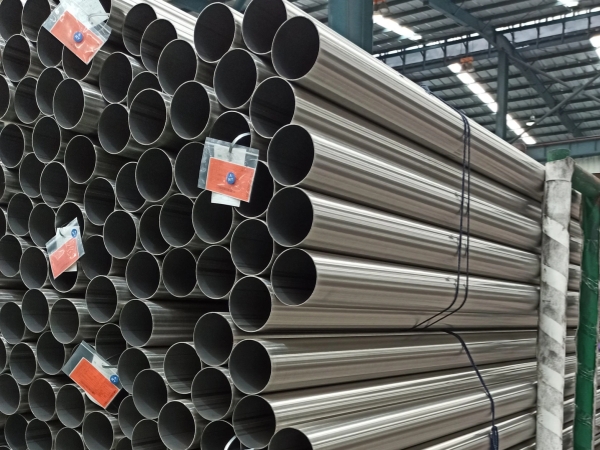304 stainless steel is the most widely used heat resisting steels, which offers good corrosion resistance to many chemical corrodents as well as industrial atmospheres. 304 stainless steel pipe is a tubular shaped pipe of 304 stainless steel, which pocess has excellent mechanical properties, good formability and can be readily welded by all common methods. In this article, we will talk about welding precautions of 304 stainless steel pipe.

Welding Precautions of 304 Stainless Steel Pipe:
1. Use vertical external power supply, DC positive pole (cable connected to negative pole).
2. It is generally suitable for welding plates with a diameter of less than 6 mm. It has the characteristics of beautiful welds and small welding deformation.
3. The protective gas is argon with a purity of 99.99%. When the welding current is 50-50A, the argon gas flow rate is 8-0L/min, and when the current is 50-250A, the argon gas flow rate is 2-5L/min.
4. The length of the tungsten electrode extending from the gas nozzle is preferably 4 to 5 mm. In places with poor shielding such as fillet welds, it is 2 to 3 mm. In places with deep grooves, it is 5 to 6 mm. Generally, the distance from the nozzle to the working area is longer. greater than 5 mm.
5. To prevent welding pores, rust, oil, etc. at the weld must be removed.
6. The welding arc length is preferably 2 to 4mm for welding ordinary steel and ~3mm for stainless steel. If it is too long, the protection is not good.
7. When docking the base, in order to prevent the bottom weld on the back from being oxidized, gas protection is also required on the back.
8. In order to make the argon gas protect the welding pool well and facilitate the welding operation, the center line of the tungsten electrode and the welding workpiece should generally maintain an angle of 80 to 85°. The angle between the filler wire and the surface of the workpiece should be as small as possible, generally 0°. Left and right.
9. Windproof and ventilated. In windy areas, measures must be taken to block the network, and appropriate ventilation measures should be taken indoors.